Carbro Object View
Support
Carbro prints typically have a paper support, which was the same as the support used for the carbon process. Carbon transfer paper was commercially available and consisted of a heavy paper support coated with hardened gelatin. Prints may also be on a baryta paper, likely a fixed out POP or DOP gelatin silver paper.
Carbro prints typically have a paper support, which was the same as the support used for the carbon process. Carbon transfer paper was commercially available and consisted of a heavy paper support coated with hardened gelatin. Prints may also be on a baryta paper, likely a fixed out POP or DOP gelatin silver paper.
What to look for: Paper support with a thick paper base. Unmounted prints will tend to curl upward due to the thickness of the gelatin image.
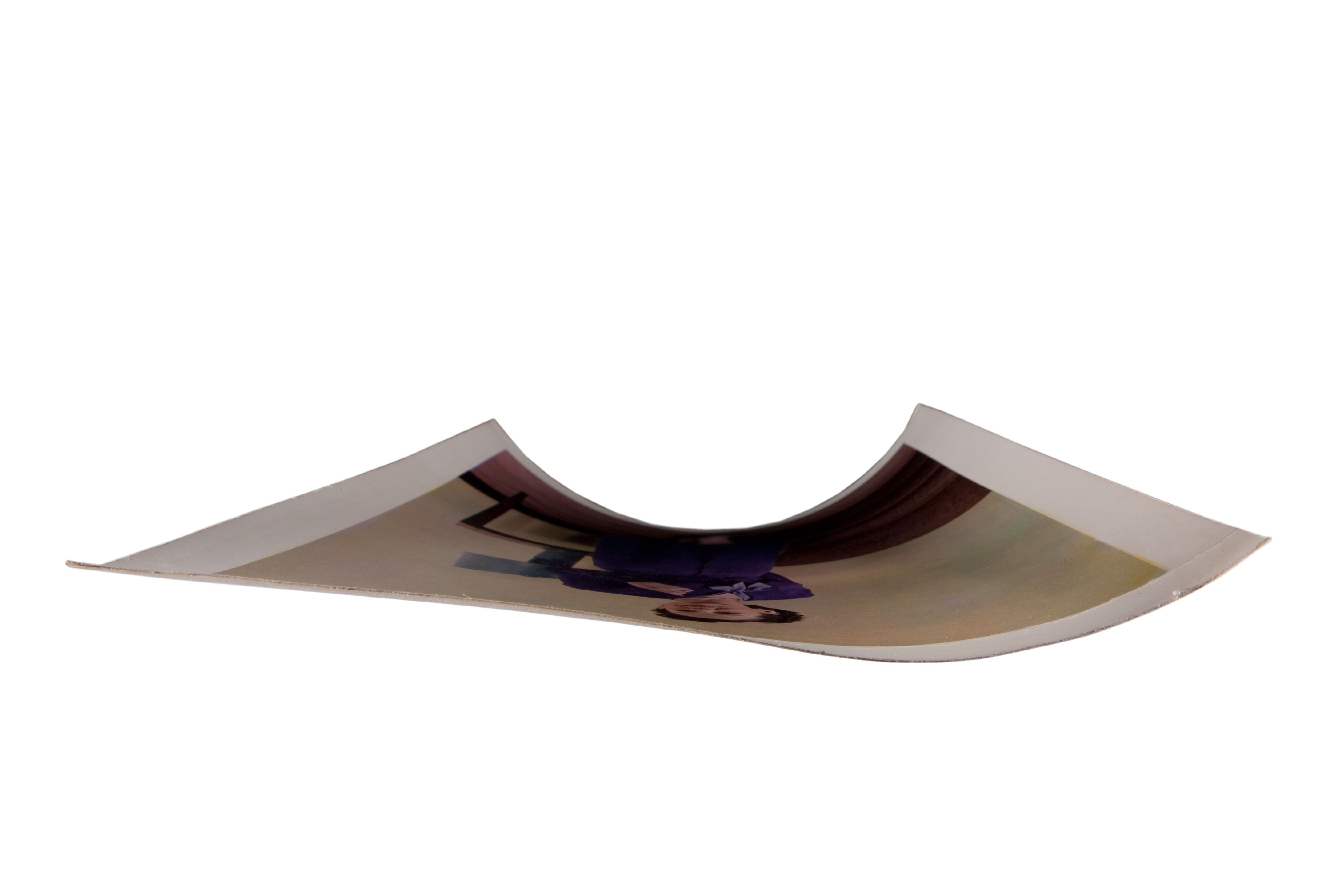
Carbro prints curl upward due to the thickness of the three gelatin layers on the paper support.
Image: Color/Tone, Quality
Like carbon prints, carbro could be made in any monochromatic color. Carbro was often used to make full color images as a subtractive color assembly process. Like other color assembly processes, there will be misregistration visible along the image edge of untrimmed prints. Because the image is composed of pigment suspended in gelatin, prints have fairly saturated color that feels heavy and dense. Prints also have excellent color stability.
Like carbon prints, carbro could be made in any monochromatic color. Carbro was often used to make full color images as a subtractive color assembly process. Like other color assembly processes, there will be misregistration visible along the image edge of untrimmed prints. Because the image is composed of pigment suspended in gelatin, prints have fairly saturated color that feels heavy and dense. Prints also have excellent color stability.
What to look for: Full color image with little to no color fading or shift in color and misregistraion of the three layers along the edges of the image. The colors are saturated and feel heavy or dense.
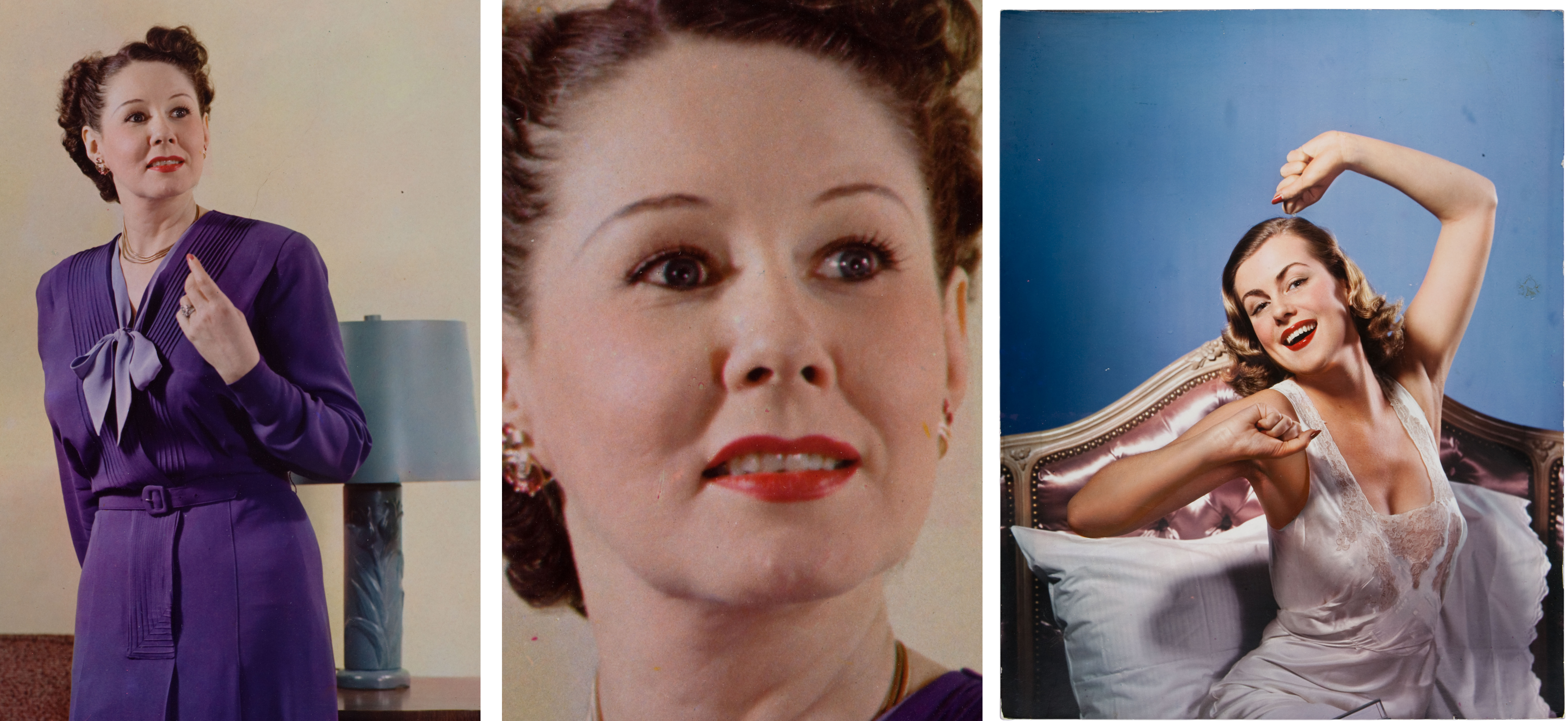
Carbro prints are made of pigment suspended in gelatin, which gives them their distinctive color, high color saturation, and image stability.
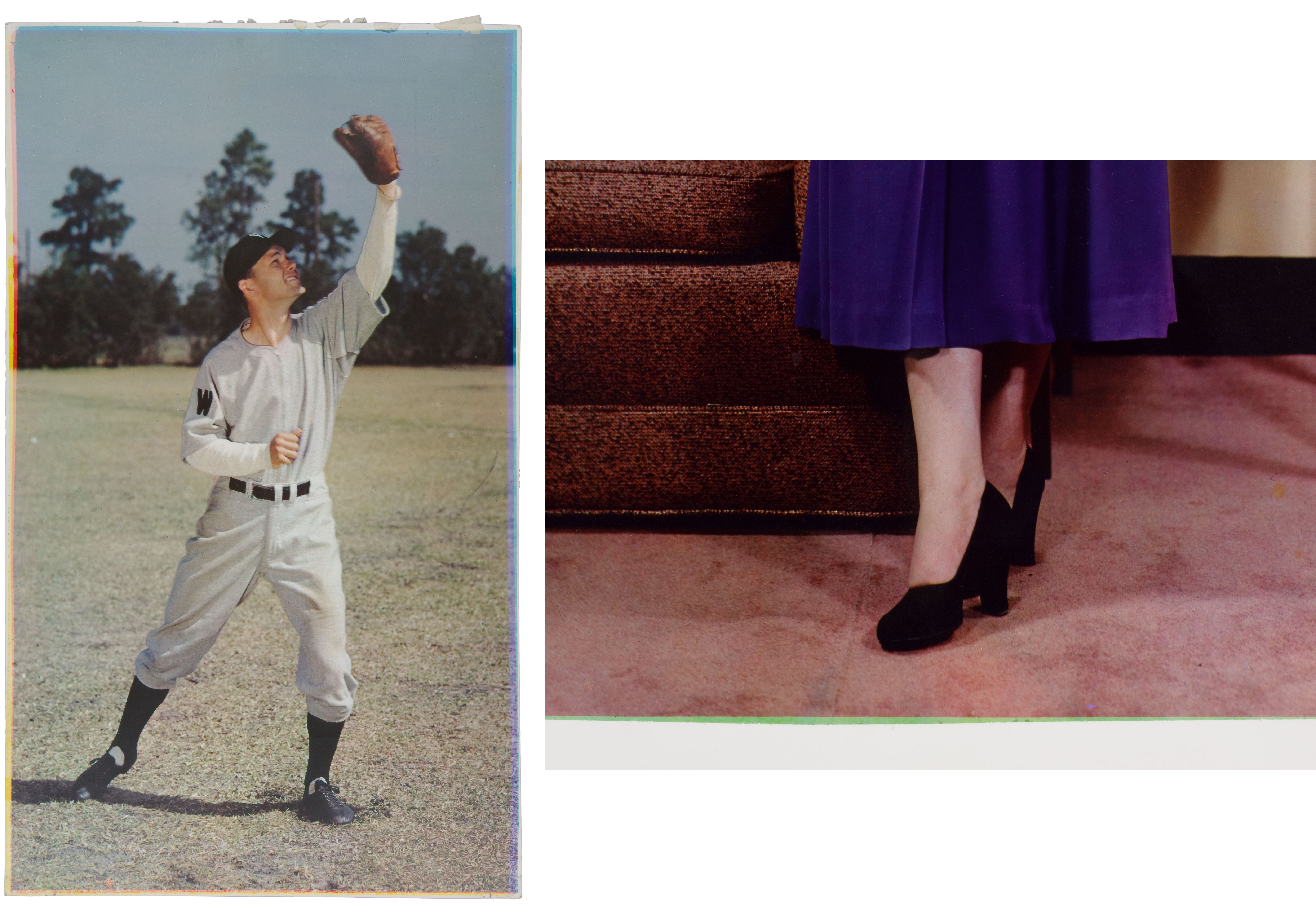
Untrimmed prints will show lines of cyan, magenta, yellow or a color resulting from a combination of these colors along the edges of the image. Trimmed prints require magnification to see misregistration.
Formats/Mounting
Carbo prints tend to curl upward due to the thickness of the three gelatin layers. Finished prints are often trimmed and mounted to a secondary support of poor quality board. It is common to find prints unmounted and untrimmed as well.
Carbo prints tend to curl upward due to the thickness of the three gelatin layers. Finished prints are often trimmed and mounted to a secondary support of poor quality board. It is common to find prints unmounted and untrimmed as well.
What to look for: Prints may or may not be trimmed and mounted to a secondary support. Secondary supports are typically poor quality board.
Finishing Techniques
Glazing was an optional finishing technique to give the print higher surface gloss (see surface view). Retouching was also commonly applied to prints in order to fix printing flaws.
Glazing was an optional finishing technique to give the print higher surface gloss (see surface view). Retouching was also commonly applied to prints in order to fix printing flaws.
What to look for: Areas where colorant, such as paint, colored pencil, or graphite, has been applied to the surface to enhance or reduce the image.
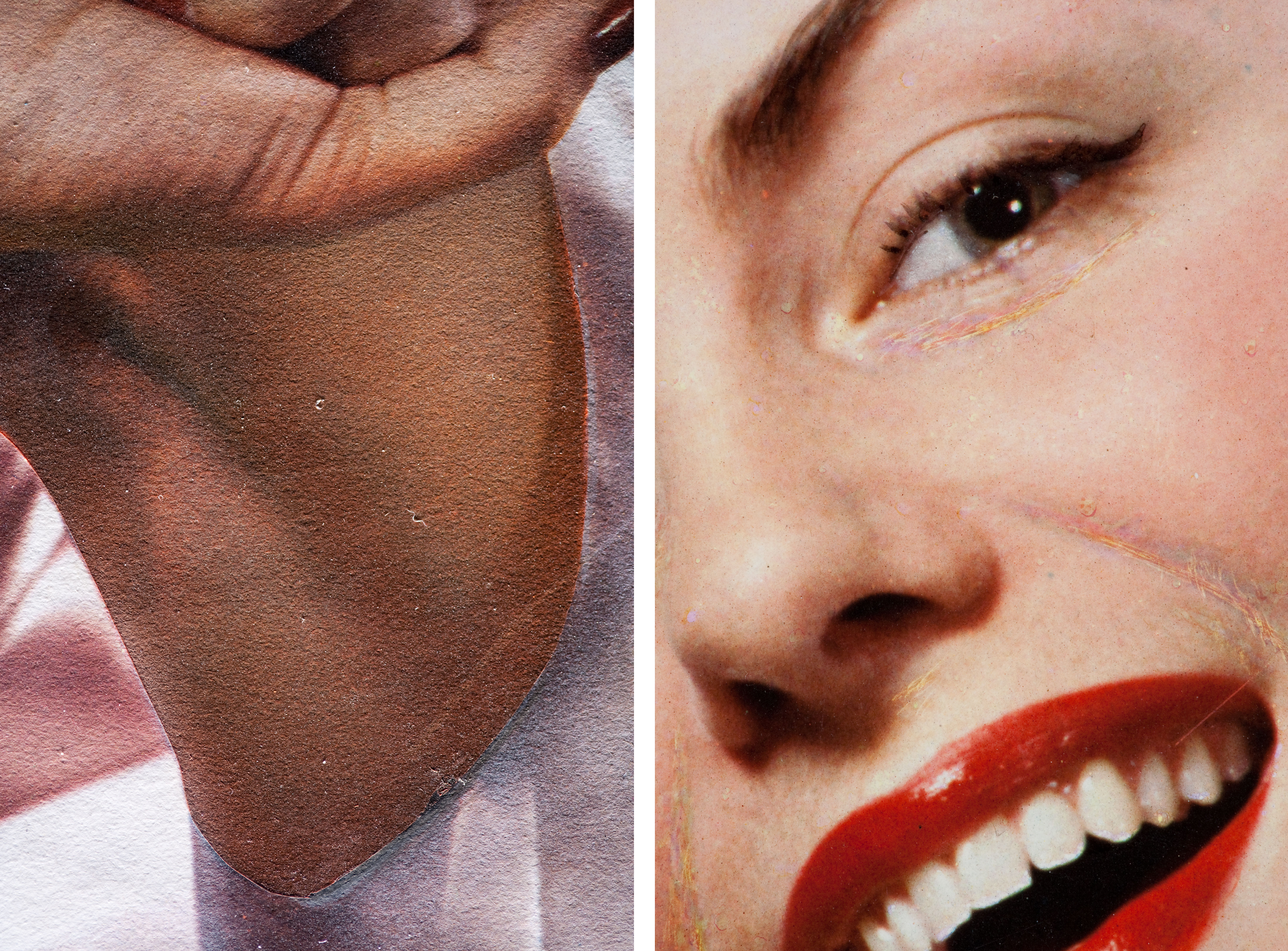
Areas of this print have been retouched in order to enhance image details.
Information Written or Printed on Object
Color carbro prints are commonly commercial prints. Information may be written on the back of the print or on the secondary support.
Color carbro prints are commonly commercial prints. Information may be written on the back of the print or on the secondary support.
What to look for: Names, dates, or other details written on the back of the print or on the secondary support.
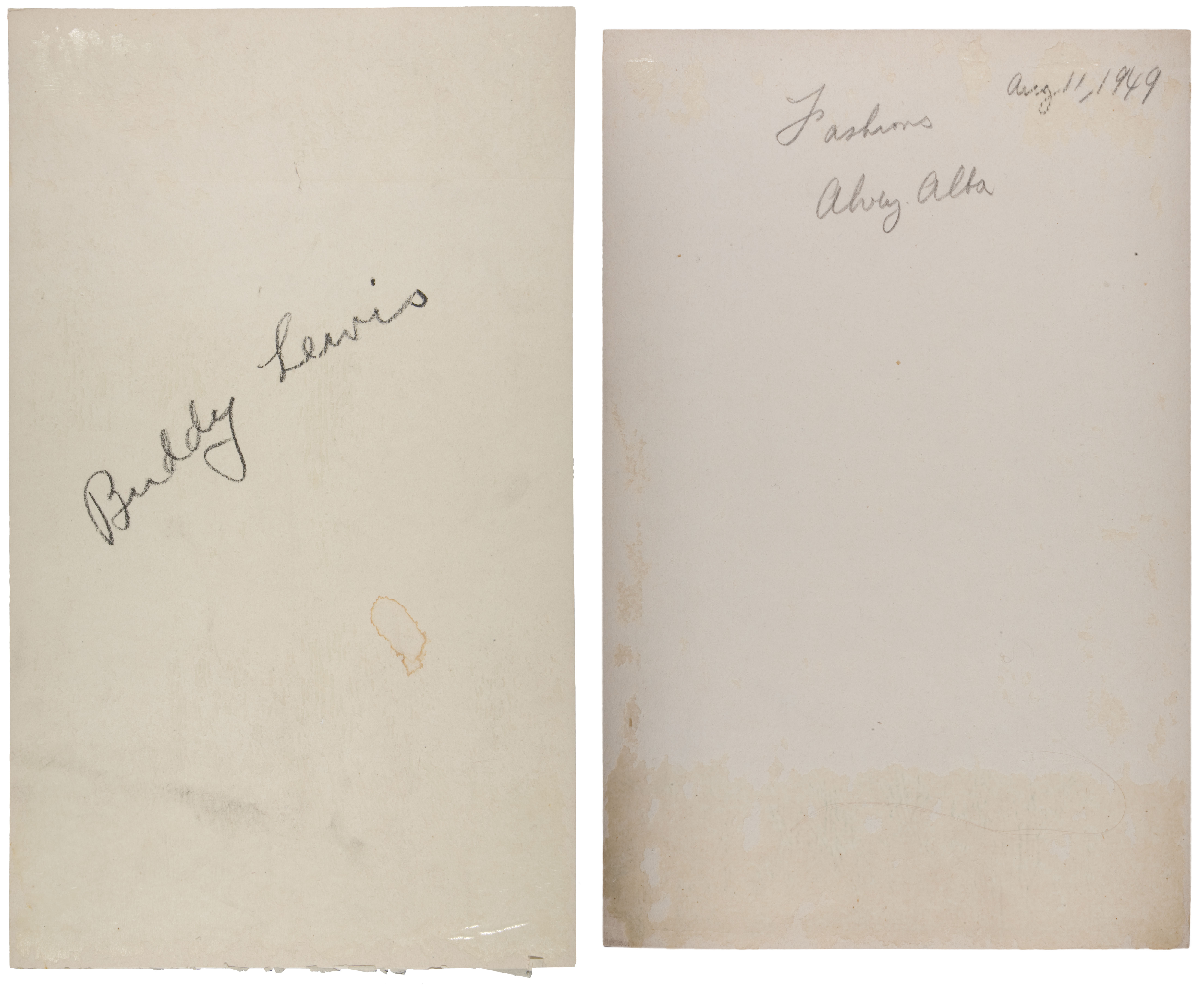
Information pertaining to the image is written on the backs of these prints.